Water is in many respects, the most essential survival item. Your body needs to consume a significant amount of water each day to function properly. You may only survive a matter of a few days without water, and you may feel the effects of dehydration even sooner. Remember that in a hot climate your body will perspire more, leading to more water consumption.
If your body is low on water, you bodily functions will be impacted. Your body temperature won’t stay regulated, your electrolytes will be unbalanced, your joints may not work properly, you may experience weakness, you may feel lightheaded, you may get a headache, you may experience nausea, your blood pressure may increase or decrease, and more. In a survival situation, these symptoms are far from ideal.
It is a good thing that there are many water sources and multiple ways to purify the water.
Boiling
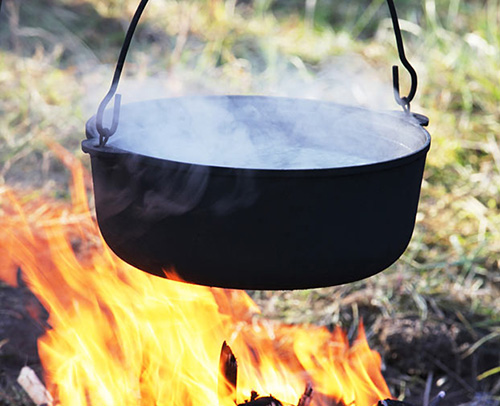
Boiling remains the most reliable way to kill bacteria, pathogens and parasites in the water. However, it will not get rid of all forms of chemical pollution, nor radiation, which is important to remember. It will not remove chemicals from water such as chlorine, fluorine, iron, magnesium, and lead. Boil the water for a minimum of five minutes to kill the nasties. If you are stuck without a fireproof container, you can put stones or rocks in the fire for a minimum of 30 minutes and then put these rocks in your water containers. Be careful if you do this though as some types of rocks such as quartz and river rocks can explode when heated.
Boiling is not ideal, however, if you are on the move. To boil water you must set up a stove, consume fuel, wait for it to boil, and once boiled, wait some more for it to cool down so you can drink it.
Distillation
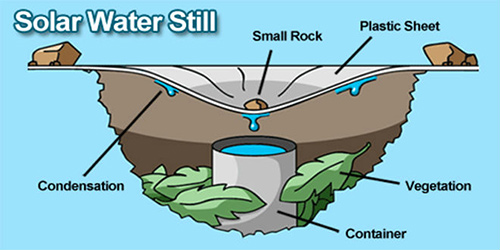
If you only have access to dangerous water, say water that has lead, or radiation, or heavy metals, or other contaminants, then distillation might be your safest option. The water can be transformed into steam, free of most contaminants including radiation. However certain organic compounds might remain, and it might not help with volatile oils.
If you are bugging out or out in the country, you could try the solar still, a simple arrangement that collects and distils water via a hole in the ground. To build one, you need a reasonably sized sheet of plastic. Use this to cover a three feet deep hole, with a clean container at the bottom. Secure the edges with rocks. Put a small rock in the centre of the the plastic sheet. Dig the hole in a location likely to get the most sun or heat. Choose the dampest ground around. You can add vegetation to increase the water production.
You can also make a transpiration bag, though this is less effective than the solar still. To make this, tie a clear plastic bag around live vegetation and wait.
Survival Straws
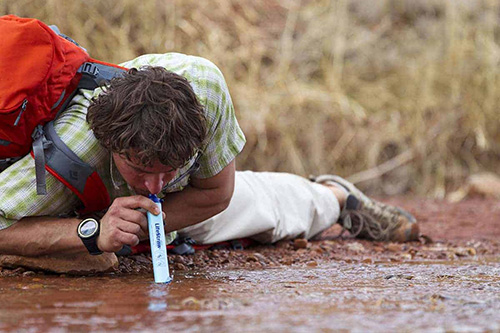
A survival straw is a great new item for any good bug out kit. They are small and light and can be used quickly on the go. Some models can be used as you would a drinking straw and can even be hooked up to the drain valve on a water heater to clean up the water you might find in a water heater after a disaster, or even attached to a water hose pipe that you might find in a garden. Many of these filters contain an activated carbon filter element, which not only filters out larger bacteria and pathogens, but also removes odd flavours and odours from the water.
UV light disinfection
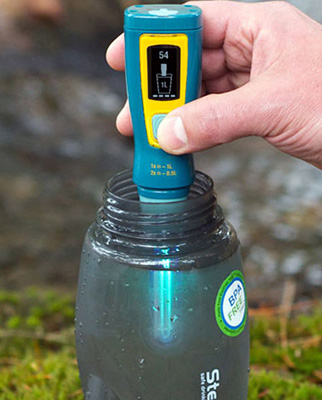
Ultra Violet (UV) light disinfection is one water treatment system that can be used to remove most forms of microbiological contamination from water. UV light is part of natural sunlight. It cannot be seen. When UV light enters a microorganism, its energy will damage the microorganism’s cellular function so that it will not be able to grow. UV light is normally effective against all viruses, bacteria and protozoa. However, some microorganisms such as Cryptosporidium and Giardia have protective or thick cell walls that some low power UV light systems are not able to penetrate. UV light disinfection is not 100-percent effective in water with large floating particles, however is great for clear water that you are not sure about.
The Steripen is a compact handheld UV water purifier designed specifically for outdoor/expedition use; up to 8,000 16-ounce treatments. Safe and effective without altering taste, pH, or other properties of water; chemical-free. This is ideal for a bug out bag as it is small and light, and can be used quickly.
Solar Water Disinfection (SODIS)
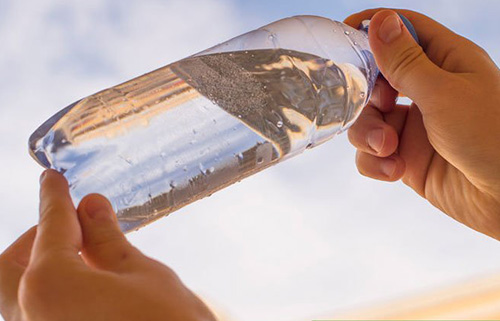
This method uses the sun for disinfection. The most common way of doing this is to leave clear plastic bottles of water out in the sun for at least a full day. The sun’s UV light kills almost all biological hazards in the water. This method has some advantages, it is basically free, easy to do and yet effective at killing biological contaminants. However, it should be remembered that this method should not be relied upon however, as you must have the sun out for at least a whole day for it to work. Also, this method does not help at all with chemical contamination. Finally, you must use smaller, clear, bottles for it to work, to a maximum safe size of two litres.
Disinfecting Tables
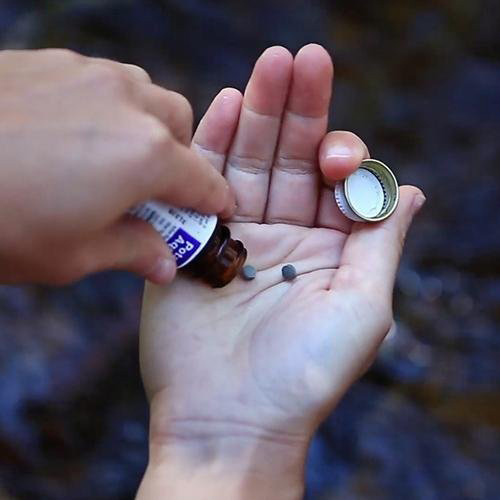
Iodine Tablets
One of the most common and popular water disinfection tablets is iodine based, Potable Aqua’s Germicidal Water Purification Tablets.
The iodine tablets can work very effectively. The iodine tablets from Potable Aqua have a one-year shelf life. They are better than 99 percent effective against water-borne pathogens.
Water treated with Potable Aqua is ready to drink 35 minutes after treatment begins, which is fairly quick, often important in survival situations.
I should mention though that the toxicity and flavour of iodine can be a little problematic. The iodine tablets are generally not a good choice for pregnant women or anyone with thyroid issues or shellfish allergies. Picky children may also refuse to drink the iodine-infused water.
Chlorine Tablets
Chlorine is an alternative to Iodine. A popular type is Katadyn’s Micropur tablets. These chlorine based tablets can last over two years, roughly double that of iodine tablets. These are also 99 per cent effective against pathogens. Some chlorine tablets take four hours to work, but these ones can work in 30 minutes.
By the end of the waiting period, most of the chlorine will have dissipated, making it more tolerable, and better tasting than iodine tablets.
Which Method?
Which water purification method you use may clearly vary depending on your situation, and a wise survivalist will be ready to use several of these methods should they need to.
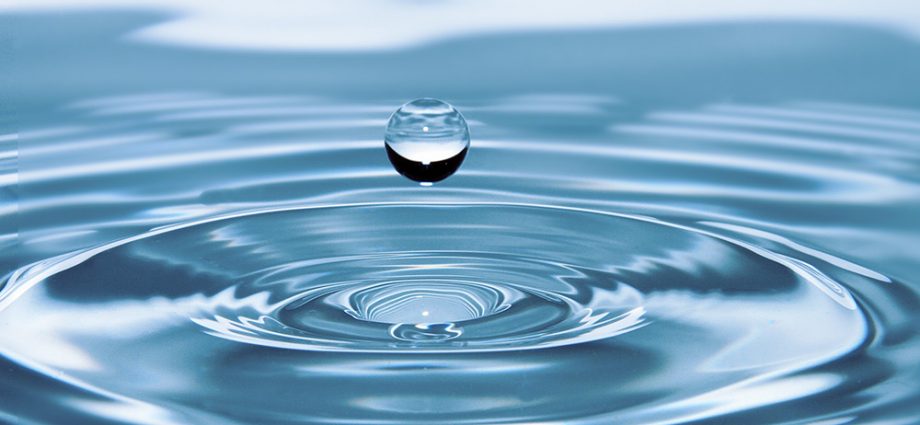

Katadyn’s Viaro it works great with little effort, pick up an extra filter to have on hand.